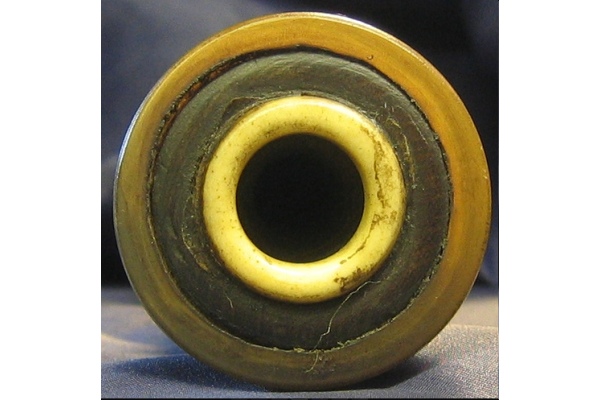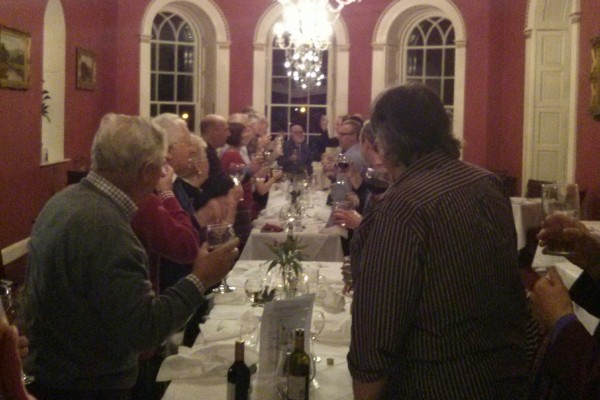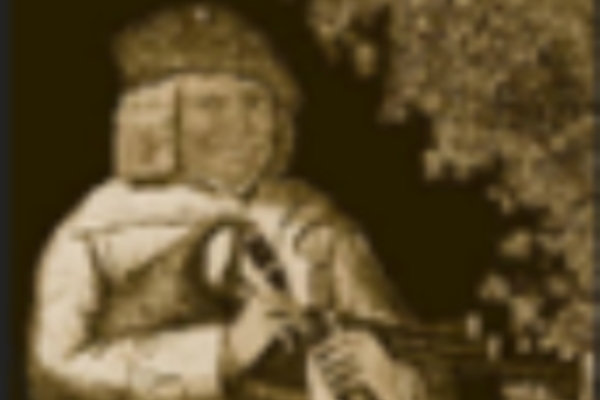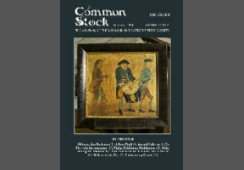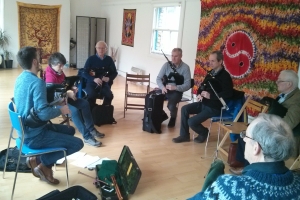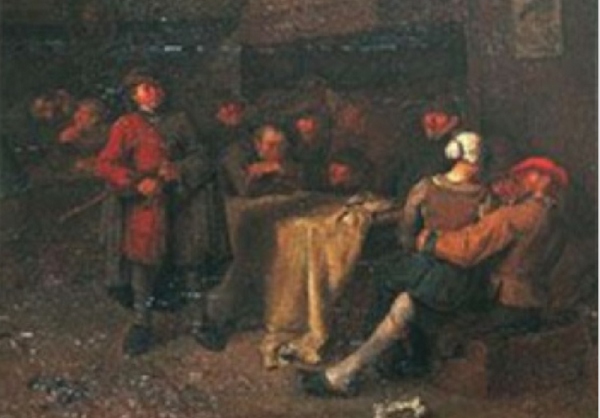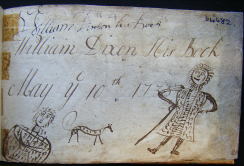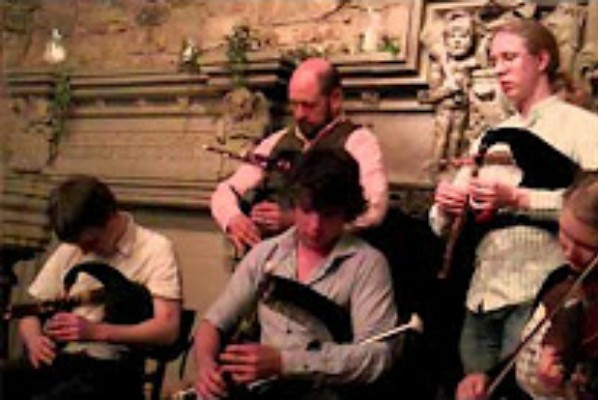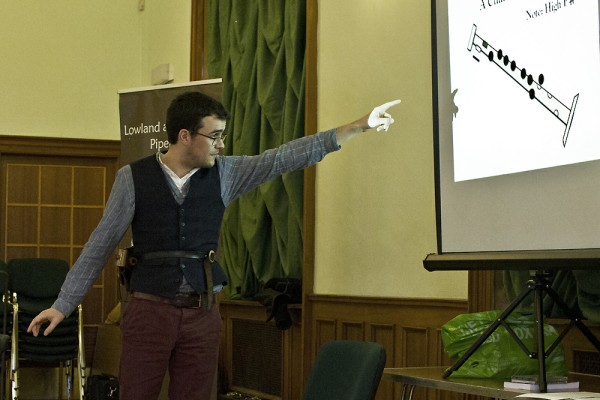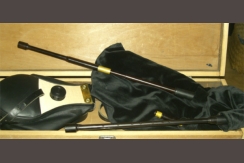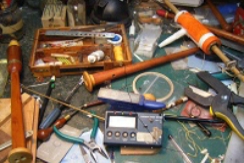This is an edited version of the article Keith Sanger wrote for Common Stock in December 2004 with the title ‘Common Stock Revisited’. It fills in some of the background to the artist Walter Geikie and his engraving featured elsewhere in this issue.
While searching back numbers of Common Stock for those missing references which, through age and the passing of time, have mysteriously disappeared from one’s memory, a satisfying diversion is to re-read those items that had not really made an impact at the time of first reading. One such event occurred when glancing at the cover illustration of Volume 9 No. 1.
On turning the cover to see what had been written in connection with this picture of a seated bellows- piper, it was to discover that it was not mentioned anywhere in that issue at all. Yet the picture was very familiar, and so it seemed sensible to retrieve it from anonymity, at least as far as Common Stock was concerned.

The cover illustration had been extracted from part of an engraving called ‘The Reel o’ Tullochgorum’ by the artist Walter Geikie. The full picture shows a street scene with the piper and his boy placed on the right while the centre of the picture is dominated by a dancer shown in a fairly vigorous posture. The location of the picture was almost certainly either in or around Edinburgh where the artist was born and lived.
Walter Geikie was the son of Archibald Geikie, a perfumer, and was born near George Square, Edinburgh, in 1795. Before he was two years old he contracted an ear disease from which, although he recovered, he was left deaf and dumb. Despite this handicap he showed considerable talents and this led to him attending the Academy of Drawing in 1812. As an artist in oils he proved to be just a journeyman, but his ability was to sketch with pencil, a medium which lent itself to the engraving process, left him almost without equal in capturing people in his characteristically lively mode. He was also a fair draughtsman with a series of studies of the more unusual Edinburgh buildings. He died on the 1st August 1837 and is buried in Greyfriar’s churchyard. Walter Geikie published a small collection called ‘Studies from Nature', both drawn and etched by himself in 1831, but in 1841, a few years after his death, Sir Thomas Dick Lauder published a larger volume of his work along with an introduction from which this biographical information is drawn.
Being deaf, Walter Geikie would not have ‘heard’ the scene he was sketching, but was there perhaps a message in the title he gave to it? To quote the introduction to Tullochgorum in The Book of Scottish Song published by Blackie and Son in 1855, where it is the very first song in the collection:- “This ‘first of songs’ (as Burns calls it) was written by the Rev. John Skinner, in the house of a lady named Montgomery, in the town of Ellon, Aberdeenshire, where he happened to be on a visit. The lady is said to have asked for a song after dinner, in order to put a stop to a political dispute, and at the same time to have expressed surprise that the fine old strathspey, called The Reel of Tullochgorum, had no appropriate words to it. On this hint, Mr Skinner produced the present song, and it was first printed in the Scots Weekly Magazine for April 1776. Mr Skinner was for many years pastor of the Episcopal chapel at Longside, near Peterhead, and died in 1807, at the advanced age of 86.
[ 1st verse of ‘The Reel o’ Tullochgorum’]
Come gie’s a sang, Montgomery cried, And lay your disputes a’ aside,
What signifies for folks to chide For what was done before them.
Let Whig and Tory a’ agree, Whig and Tory, Whig and Tory
Whig and Tory a’ agree. To drop their Whigmagmorum;
Let Whig and Tory a’ agree, To spend the night in mirth and glee.
And cheerfu’ sing alang wi’ me, The reel o’ Tullochgorum.
The ‘Reel o’ Tullochgorum’ print appears in the later collection which also includes a picture of a Highland Piper. A comparison of the engraving of the Highland Piper with Geikie’s original sketch shows that he certainly tidied up his engraving, giving the piper a younger appearance than perhaps the more true to life original drawing. The piper is accompanied by a small boy whose hat is being held out for the collection..Both of these pictures are usually attributed to the 1830s, and a further confirmation that the ‘Reel o’ Tullochgorum’ was undertaken late in his life is the inclusion in the posthumous collection of what must have been a work in progress of a partially completed engraving of the bellows piper and boy from the latter work.

It is at this point however, that the well known pipe tune ‘The Conundrum’ enters the picture, because where the piper in ‘The Reel o’ Tullochgorum’ (and Common Stock) is shown with his pipe bag under his right arm and the bellows under his left, the partially completed, - but potentially more detailed - separate study of the piper, shows a more usual set-up with the bag under his left arm and bellows under the right. It was certainly not uncommon to forget that the plates from which the prints were made had to be engraved in reverse, and in this case it was probably the ‘right-handed piper’ version that was in error.
[Ed: but see Geikie’s pencil sketch below - it would appear that, having shown the pipes in the usual manner in the picture of the piper and boy, Geikie decided to reverse the arrangement to give the overall sense of movement in the engraving]

